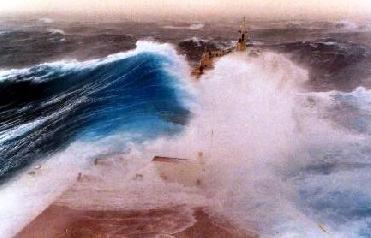
A file photo of Chandrayaan-I in orbit.
NEW DELHI (PTI): Amid euphoria over Chandrayaan-I finding evidence of water on moon, scientists however had a word of caution on the discovery saying there was a need to quantify the reserves.
Scientists here are elated at the discovery of traces of water on the moon but at the same time warn of the need to quantify the resources and also ascertain whether it is fit for human consumption.
�The results suggest that frost rather than water is present in the form of a thin film on the lunar surface. The quantity and its distribution across the moon is still an open question,� former ISRO Chairman, K Kasturirangan, said.
Kasturirangan, who conceived the Chandrayaan-I mission, said the finding by a team of NASA scientists was very significant as it had been eluding researchers for a long time.
�Ultimately, in the long run if humankind has to go and inhabit the moon, one of the important requirements is that you should have adequate water for survival,� he said.
Carle Pieters, Principal Investigator of the experiment to find water on moon, said that water was present in traces in the form of a thin film on the lunar surface.
Scientists would require one tonne of lunar soil to extract about one litre of water, Pieters said in the findings published in the journal Science.
ISRO Chairman G Madhavan Nair said the discovery was a �path breaking� event as far as Chandrayaan-I mission is concerned. �It is very very significant. So far, no mission has confirmed the presence of water positively,� the top scientist said.
�It is one of the milestones. We have to quantify it,� Mylswamy Annadurai, Project Director of Chandrayaan-I, said from Bangalore.
Annadurai and J N Goswami, Principal Scientist for Chandrayaan-I mission, analysed the data received from NASA's Moon Mineralogy Mapper (M3). The M3 data was supplemented by information gathered by ISRO's Hyper-Spectral Imager and Moon Impact Probe.
�We just hope that the water is plenty enough and easily extractable so that you can have purification process for human use. This is potentially a very big discovery for this country,� Amitabha Ghosh, a NASA scientist involved in the study of Mars, said.
Scientists believe that the findings are significant particularly because space agencies across the world are looking forward to use the moon as a base station for future inter-planetary missions.
 Previous Article
Previous Article Next Article
Next Article












The Indian Air Force, in its flight trials evaluation report submitted before the Defence Ministry l..
view articleAn insight into the Medium Multi-Role Combat Aircraft competition...
view articleSky enthusiasts can now spot the International Space Station (ISS) commanded by Indian-American astr..
view article